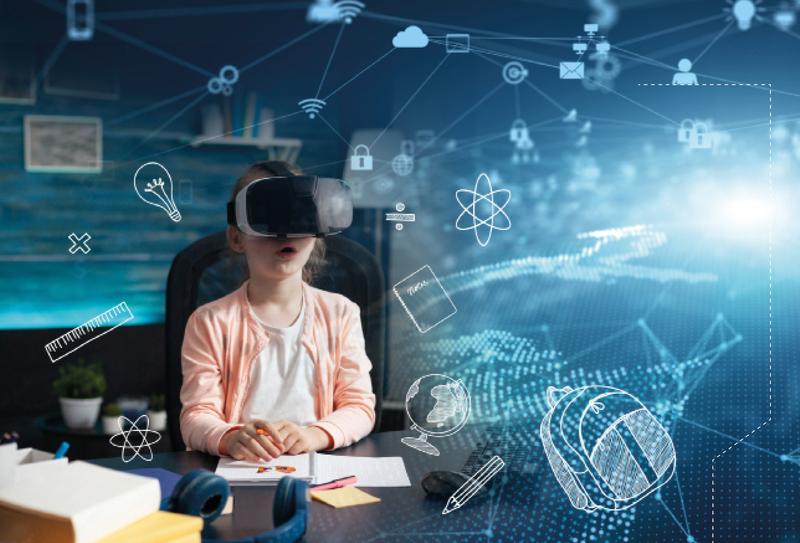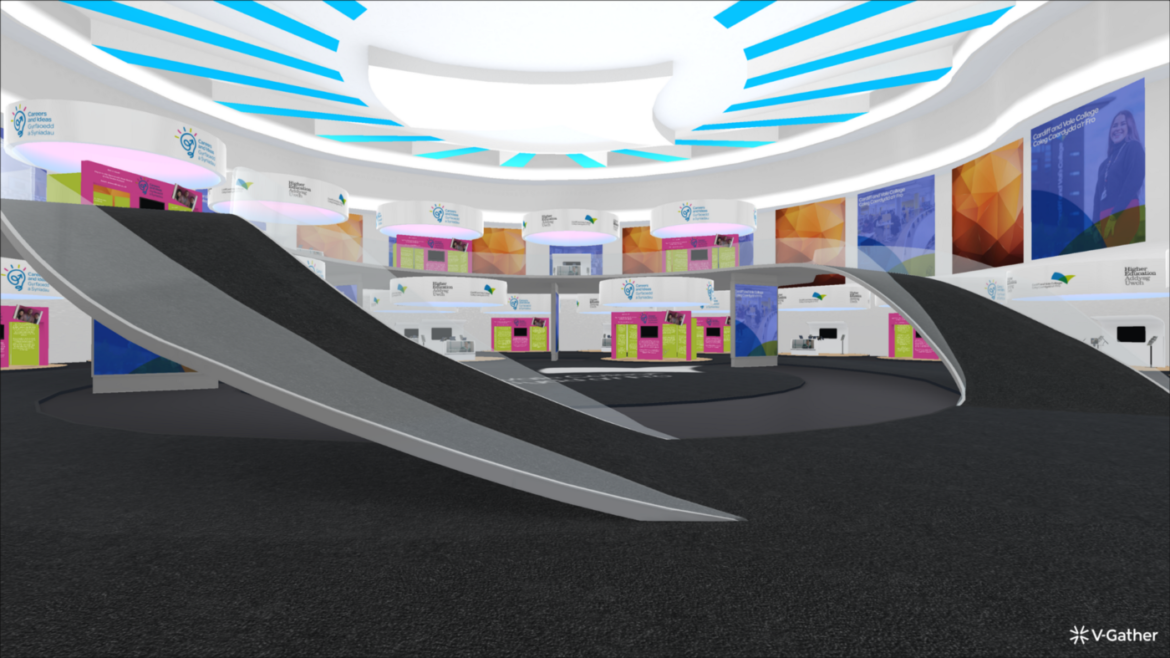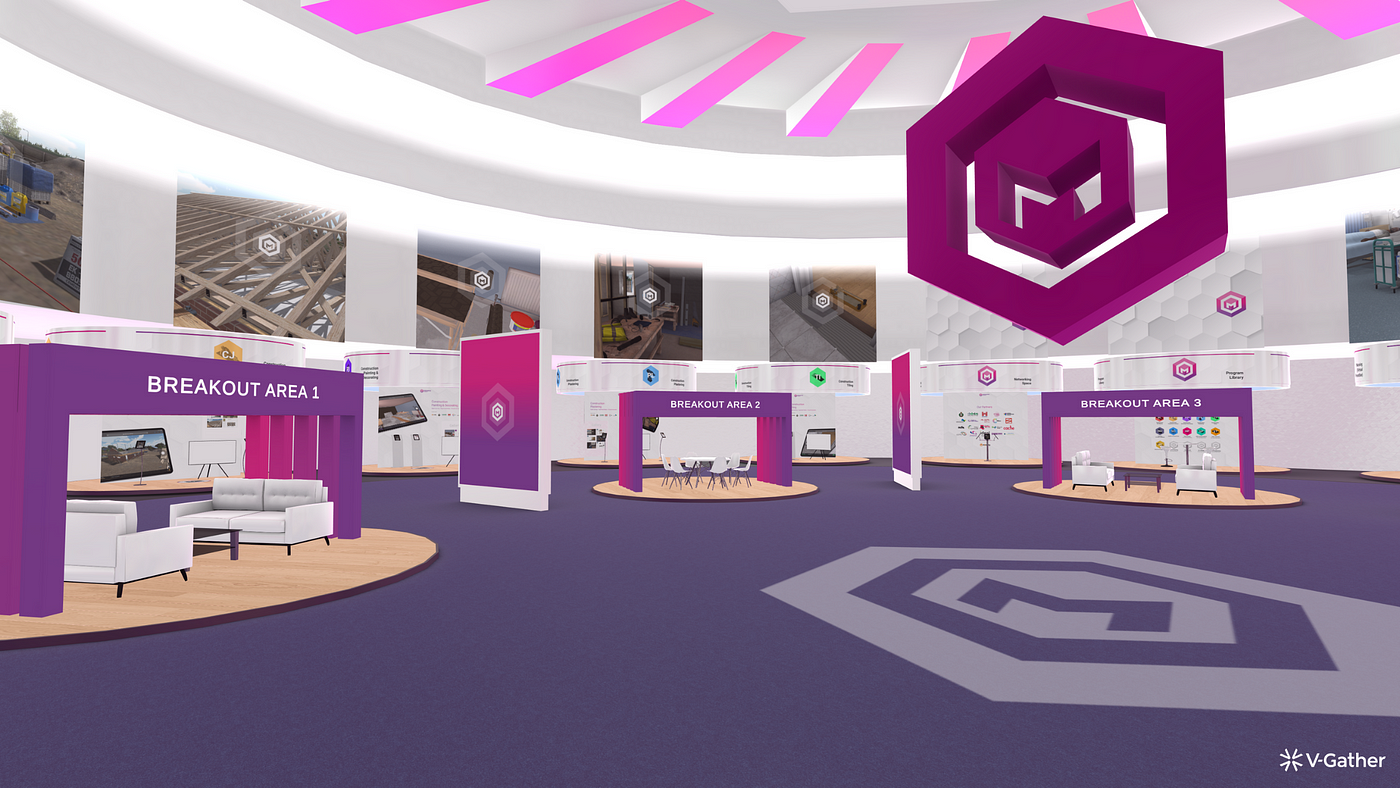One of the most significant applications of virtual reality and metaverse technology involves education and the prospect of incorporating virtual reality classes.
Social media giant Meta is implementing this concept by aiding 10 universities in launching campuses that will be built on metaverse “soil.”
As part of its $150 million Immersive Learning Project, Meta (formerly Facebook) will collaborate with VictoryXR, an Iowa company that is designing the virtual campuses.
The Global Campus of the University of Maryland is one of the campuses. The university’s 45,000-plus students will now be able to convene and share their experiences in the virtual domain.
Related Reading: Crypto Trademark Filings This Year Surpass 2021’s At More Than 3,600

Image: Medium
A Duck Pond In The Metaverse Campus
UMGC will feature buildings, grassy lawns, and even a duck pond, to name a few of the proposed amenities.
Daniel Mintz, chairman of the information technology department at UMGC, said.
“This is our first campus; we’ve never had one before. There is a duck pond.”
The company has stated its intention to introduce education into VR settings, with classes being held in VR headgears.
According to reports, Meta donated Quest headsets to organizations so that students could participate in the courses.
Through partnerships with other universities, one of the primary objectives of the company’s ILP is to increase students’ access to metaverse and blockchain technologies.
Mintz added:
“Students can don a headset and enter an administrative building to converse with the financial aid avatar.”
Related Reading: Crypto Plays A Crucial Role In Helping Combat Crime, Europol Says
Major Universities Involved In The VR Education Project
Mintz stated that the UMGC will offer five metaverse courses this fall, including courses in astronomy and biology.
Alabama A&M University, South Dakota State University, University of Kansas School of Nursing, Florida A&M University, West Virginia University, New Mexico State University, California State University, Dominguez Hills, and Southwestern Oregon Community College are the other universities involved in the project.
Steve Grubbs, the founder of VictoryXR, commented on the project as follows:
“Education is an exciting use case for the metaverse, and Meta’s Immersive Learning will help creators from all over the world acquire skills and design immersive experiences for learners.”
The company stated that this endeavor is still in the pilot stage.
All participating universities stated that they would lend VR headsets to students, who would not be charged extra for their use.
Quelle:
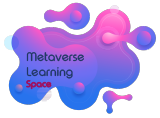
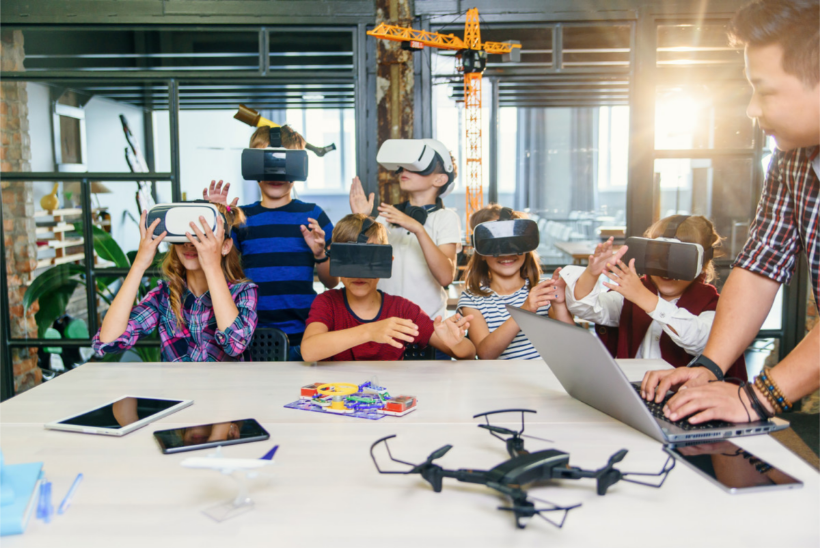
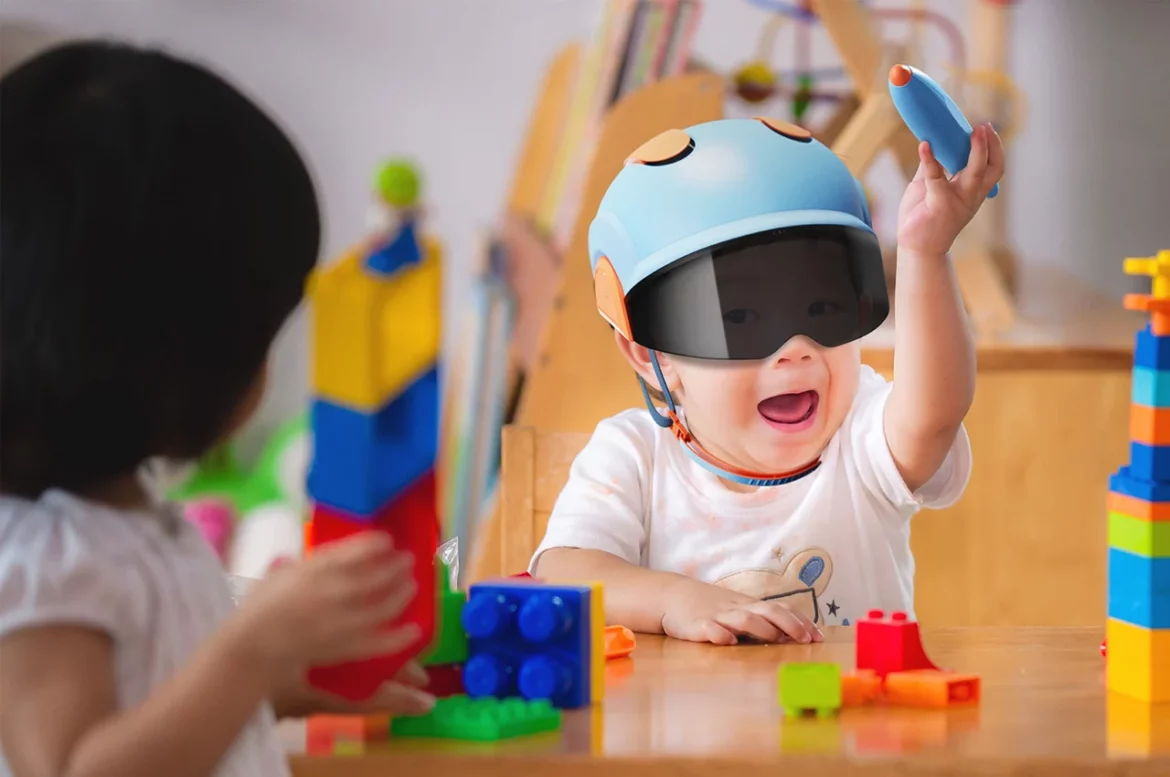
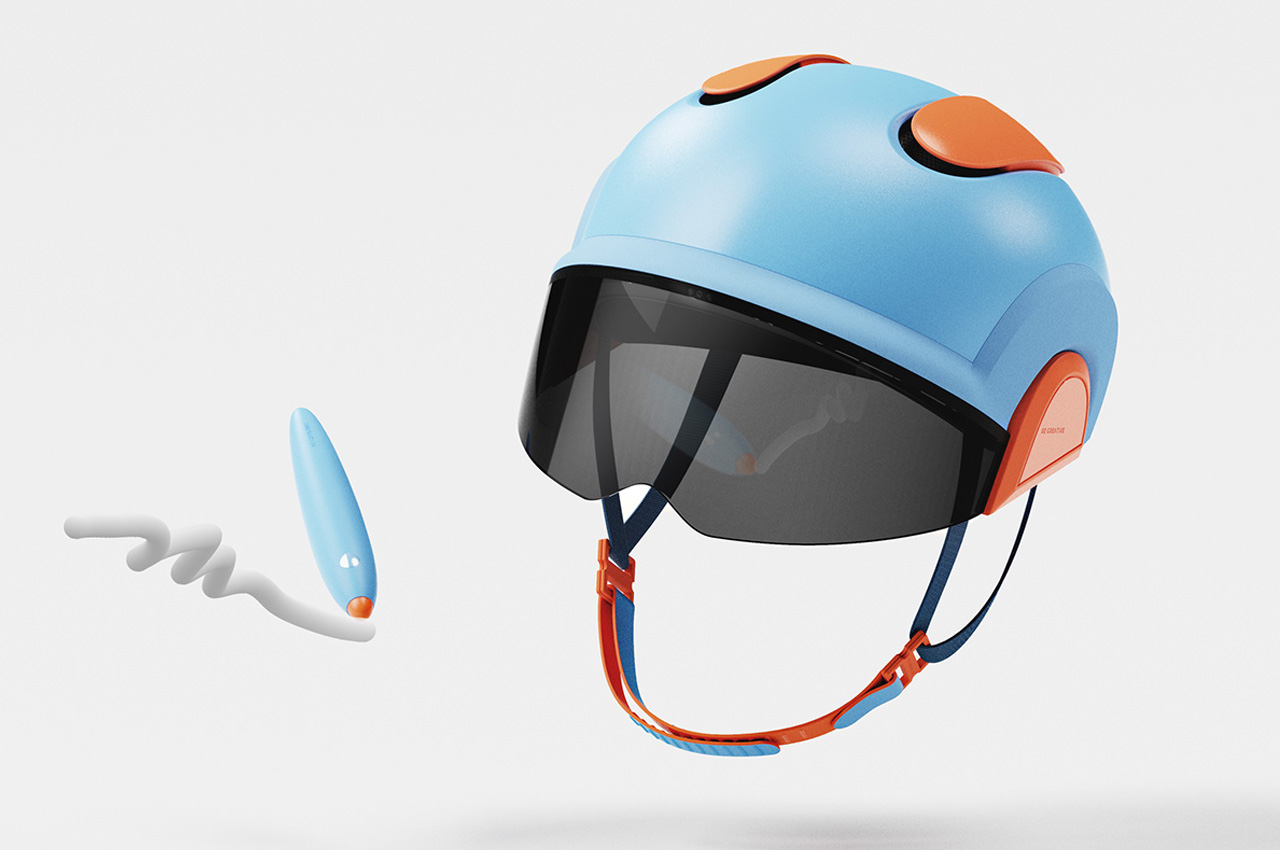

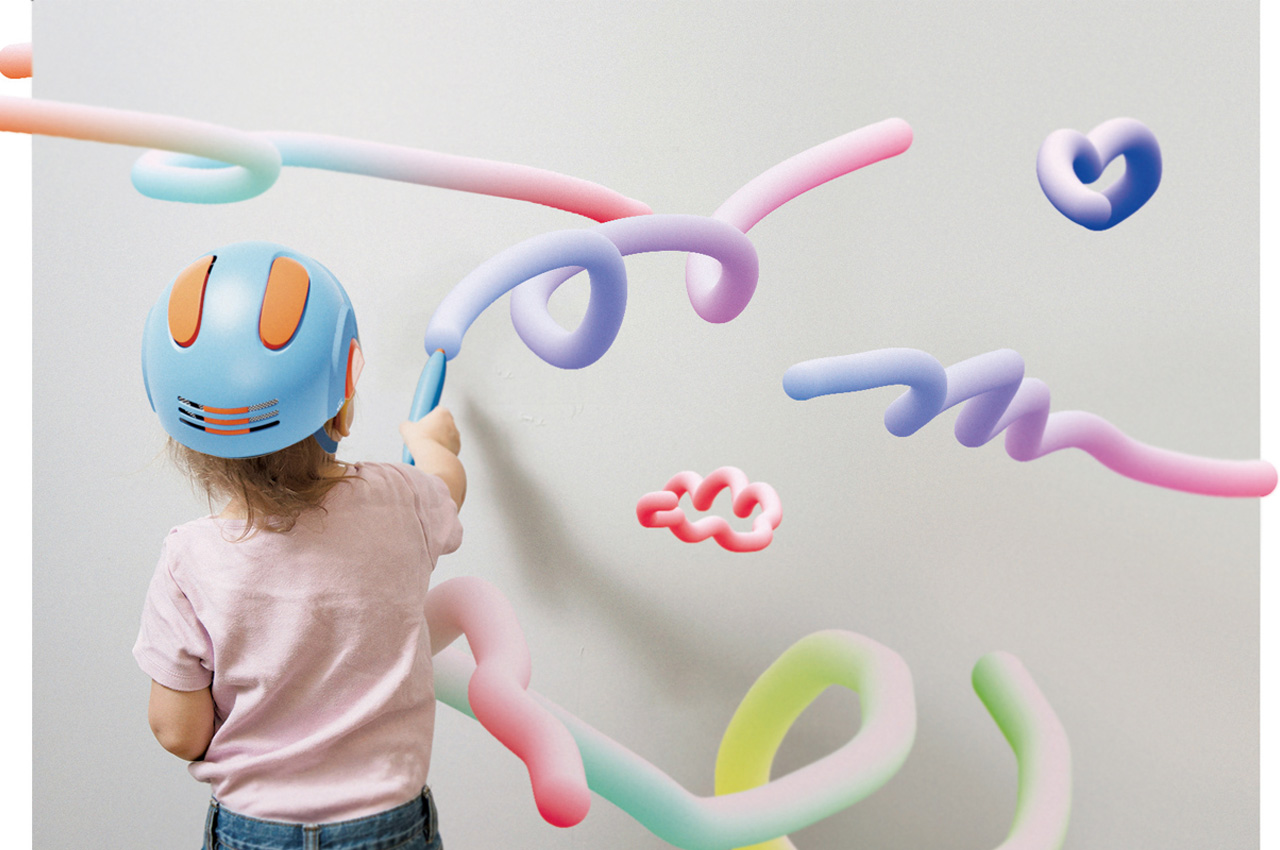

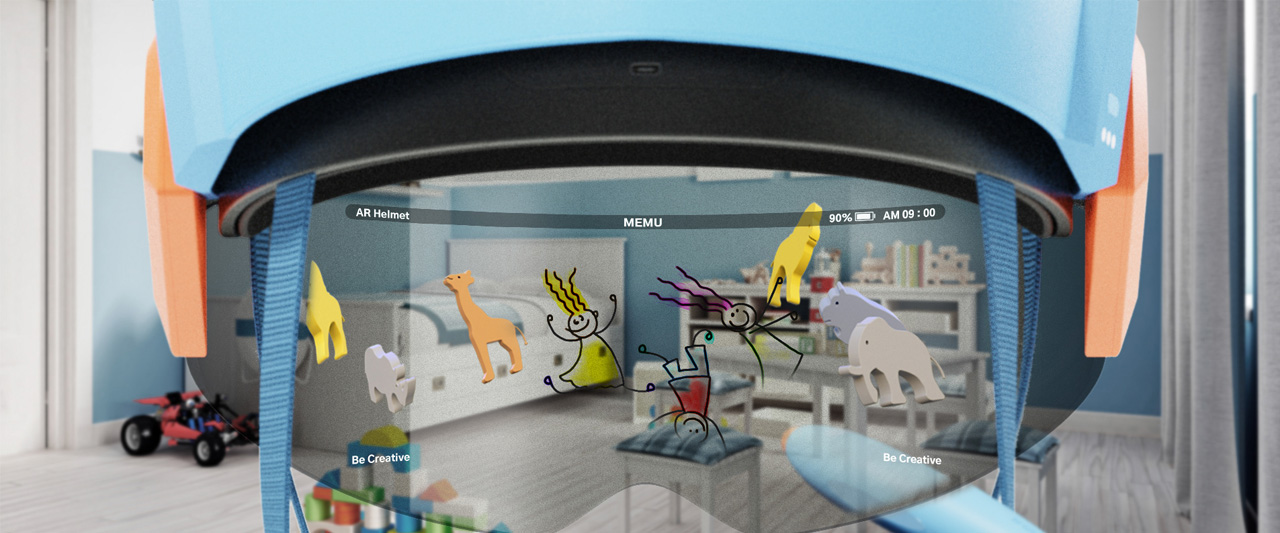
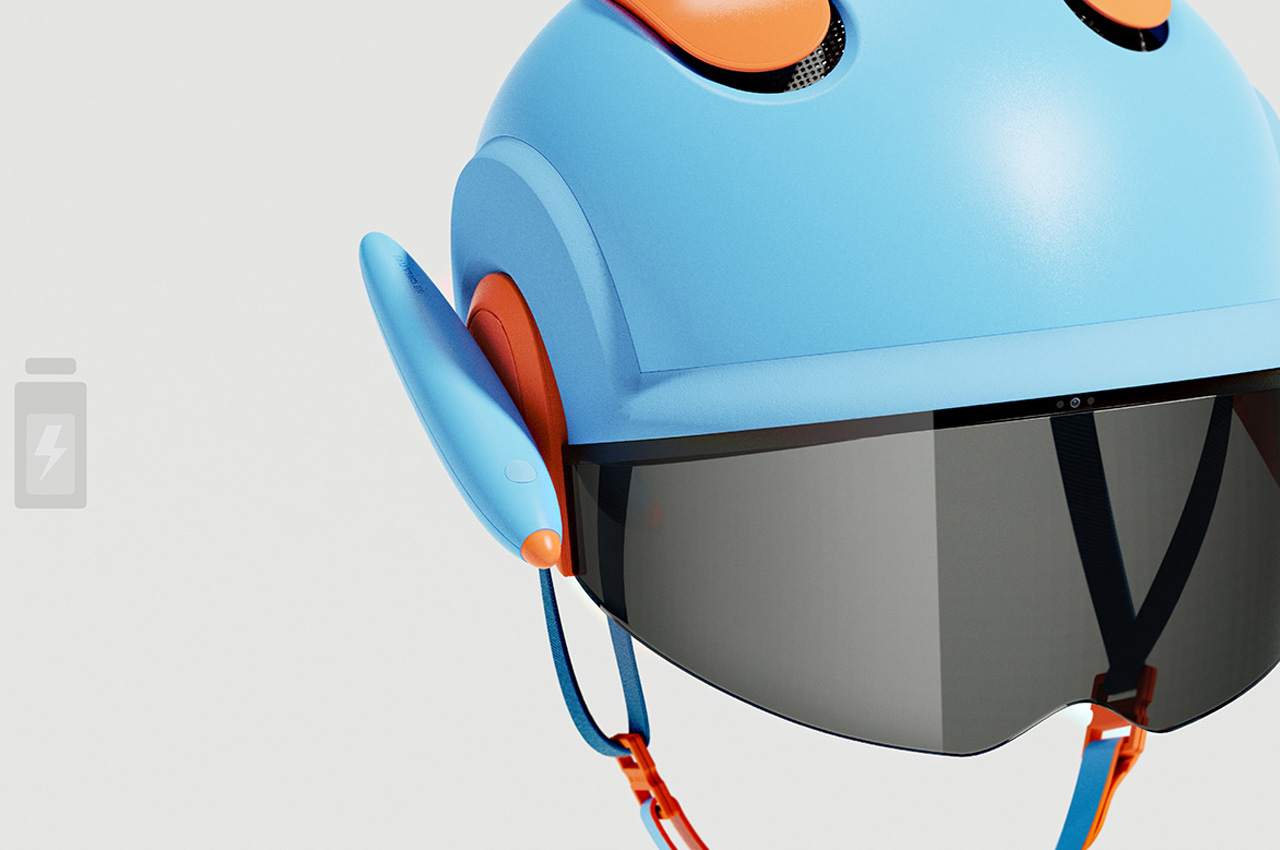
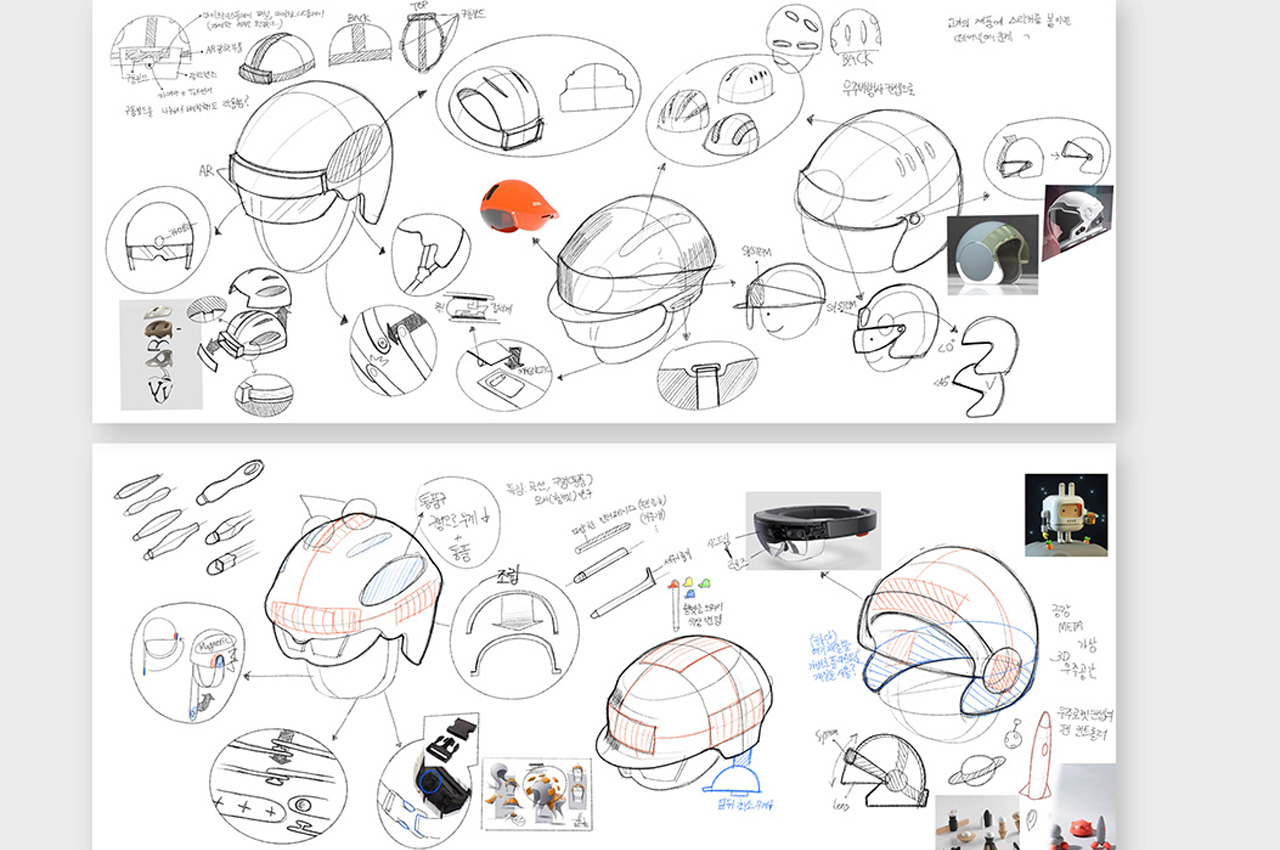
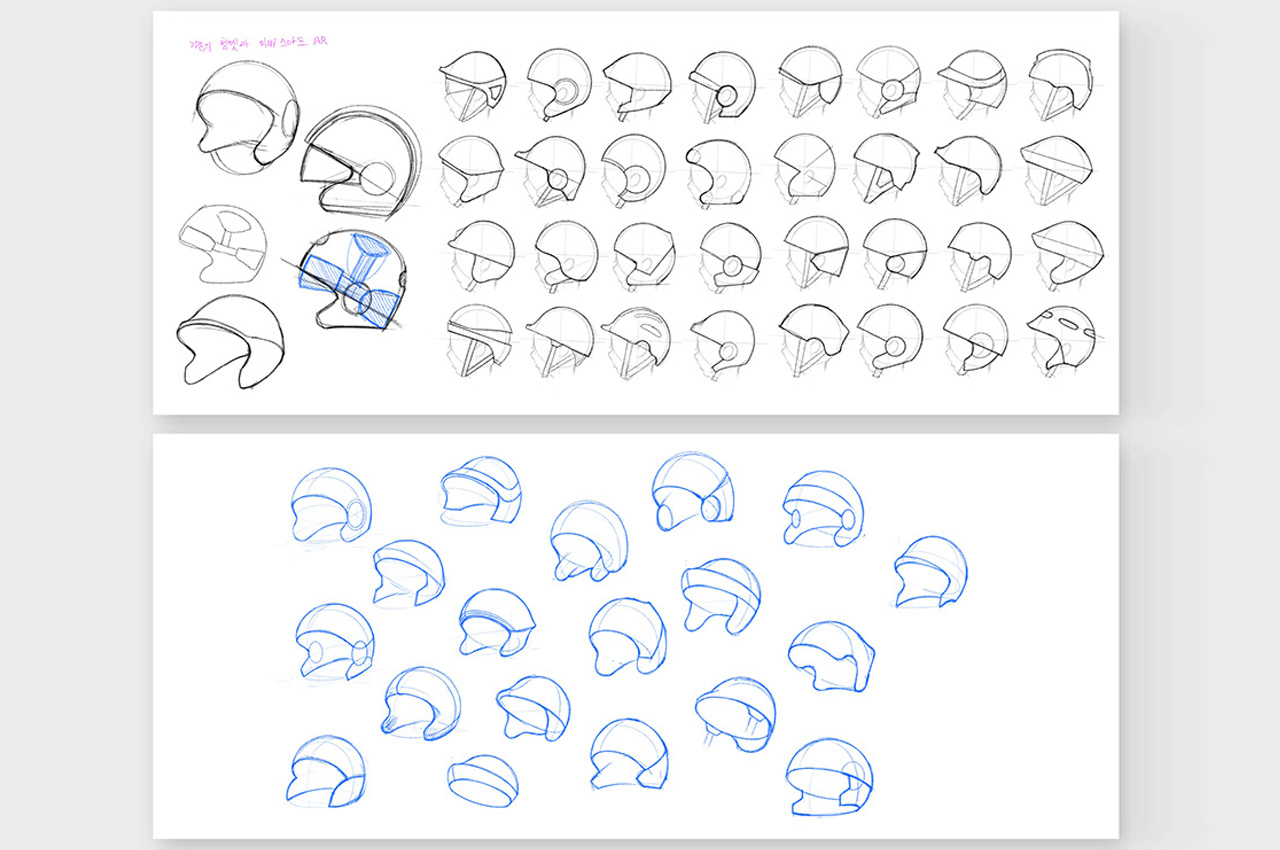
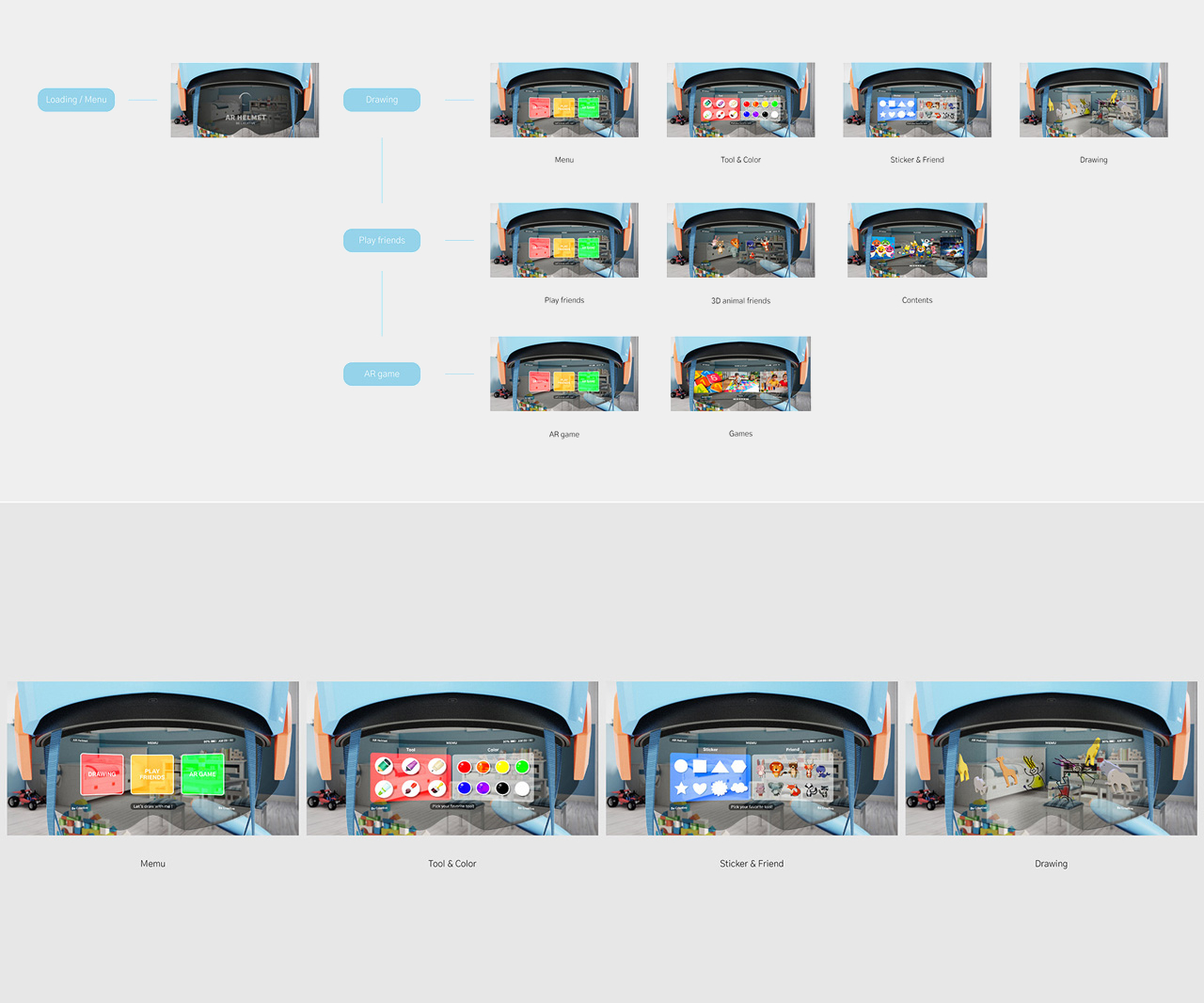
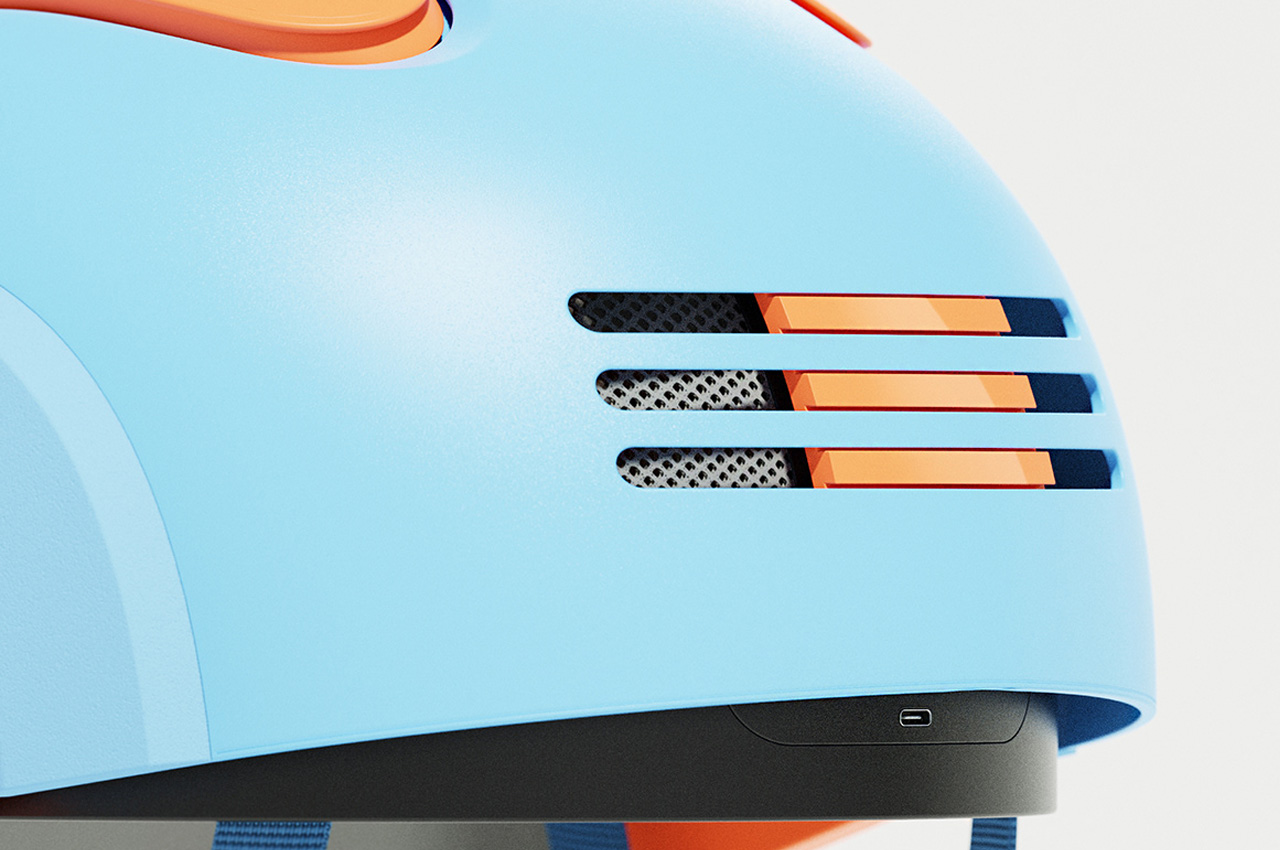

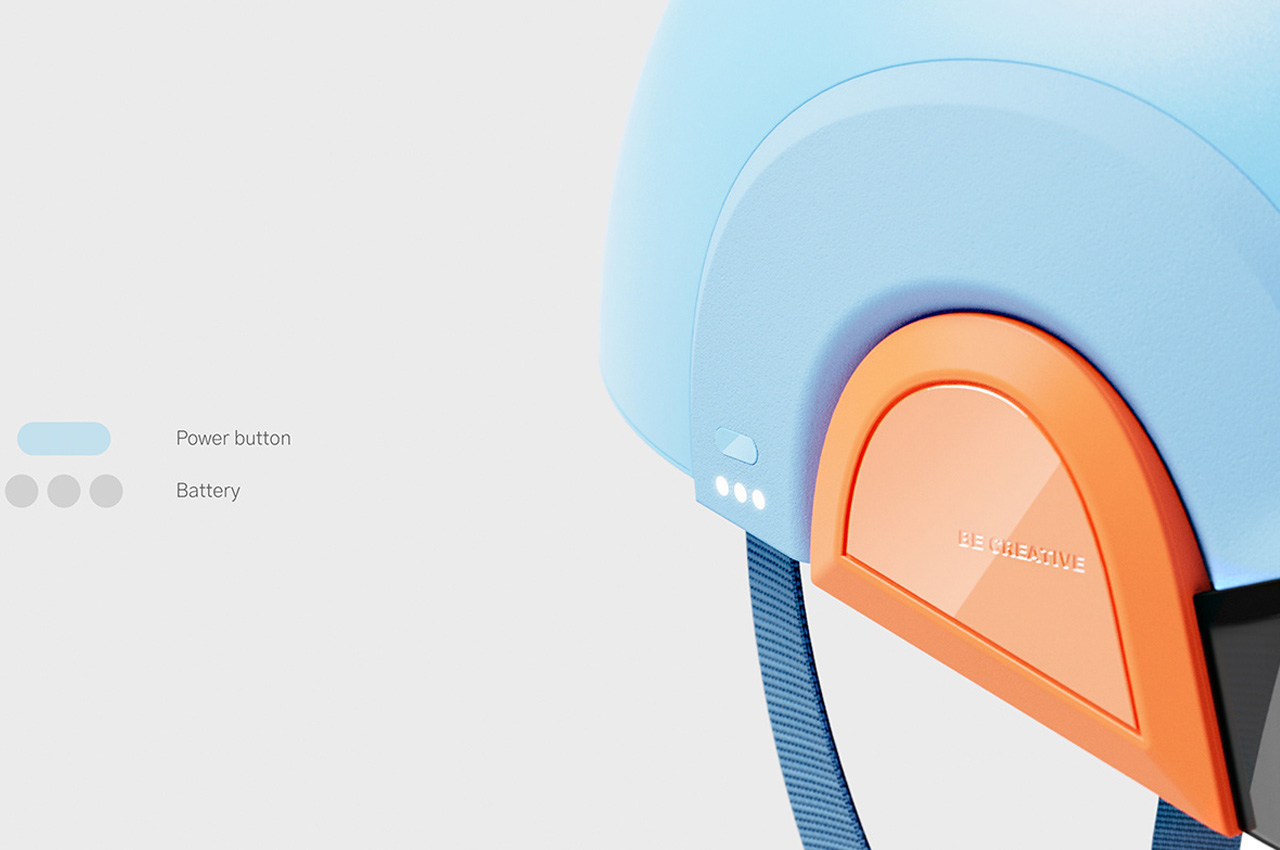


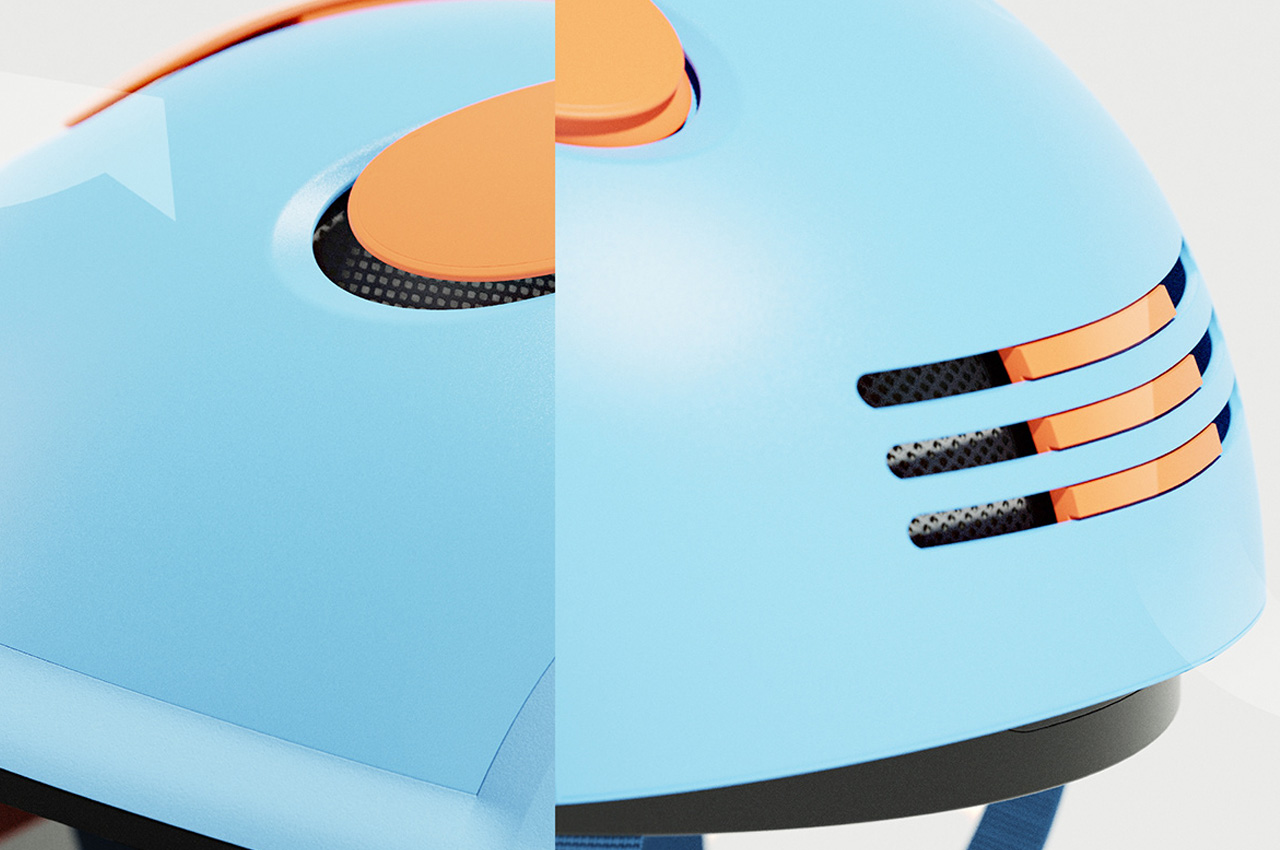
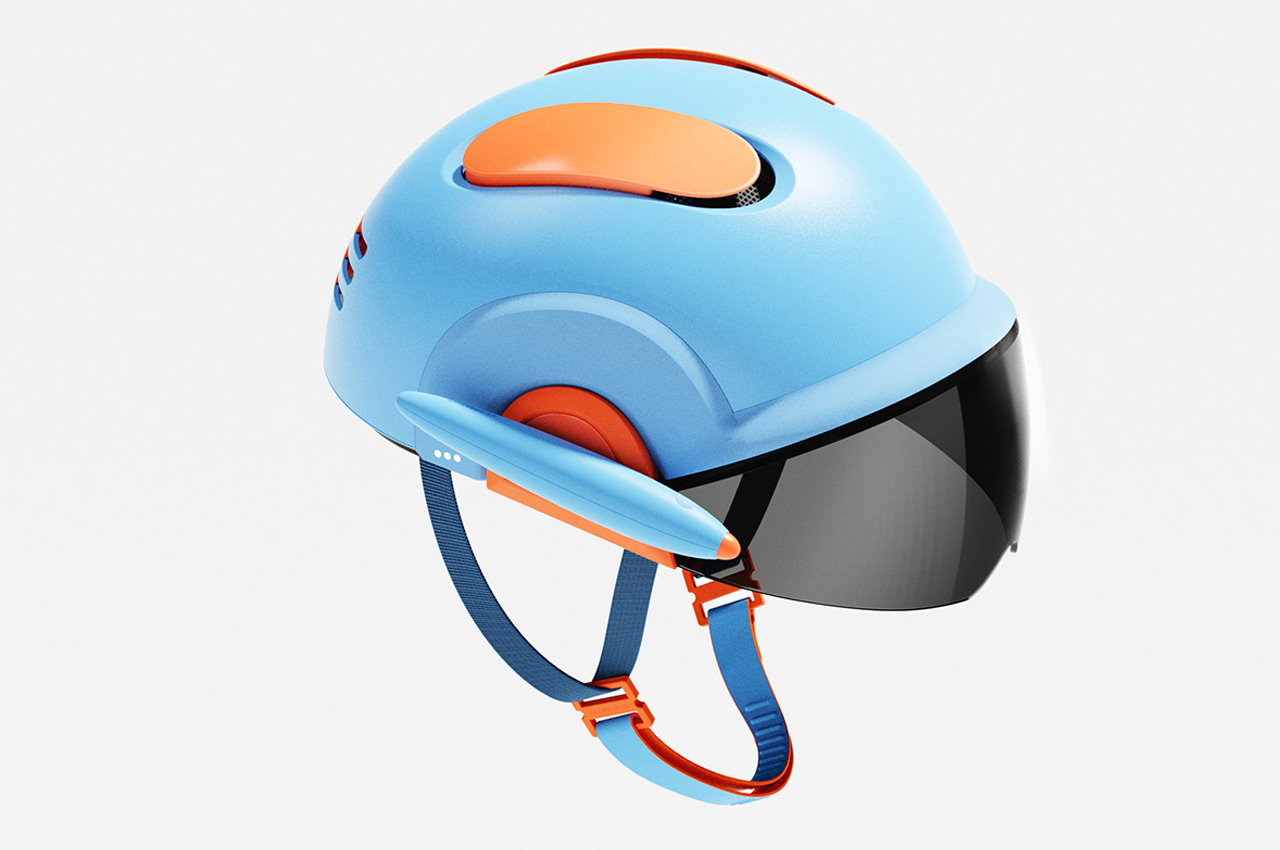

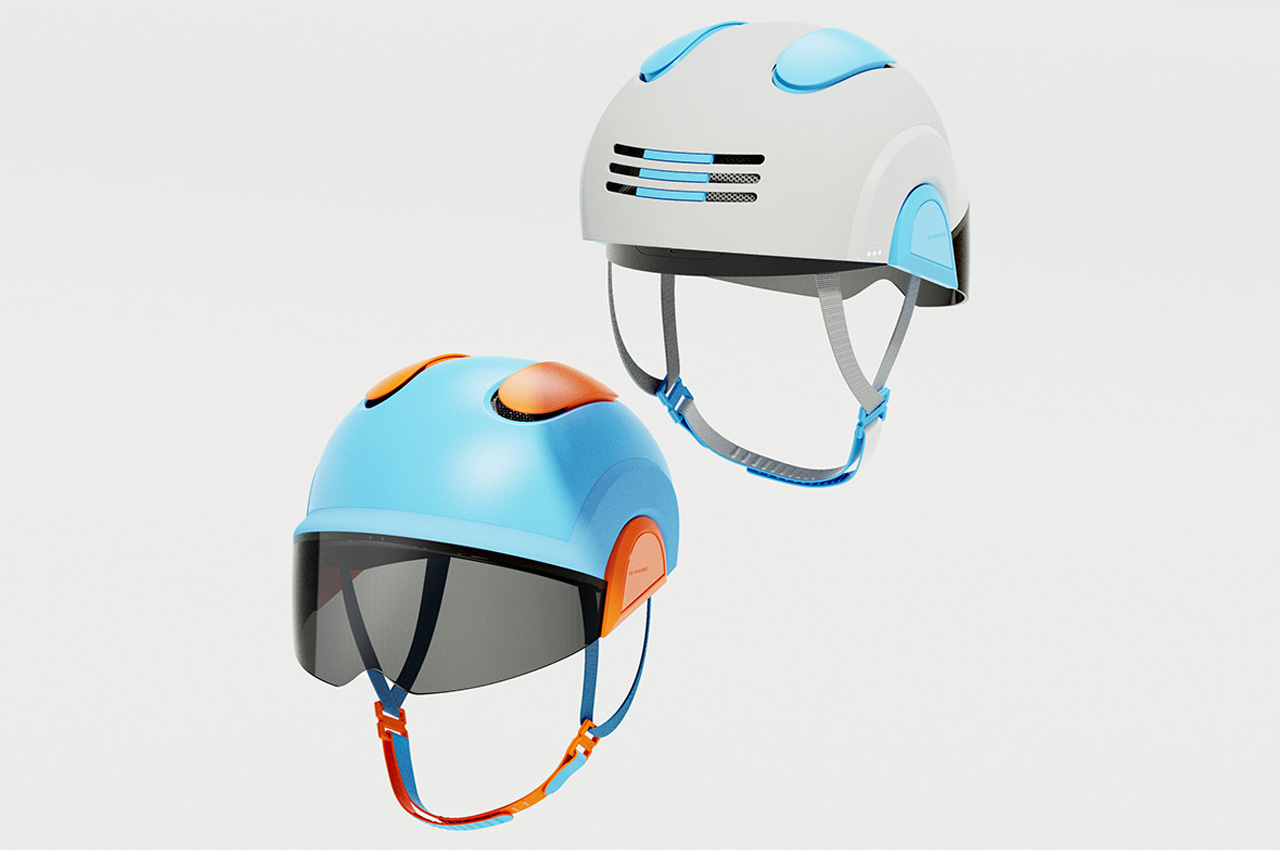
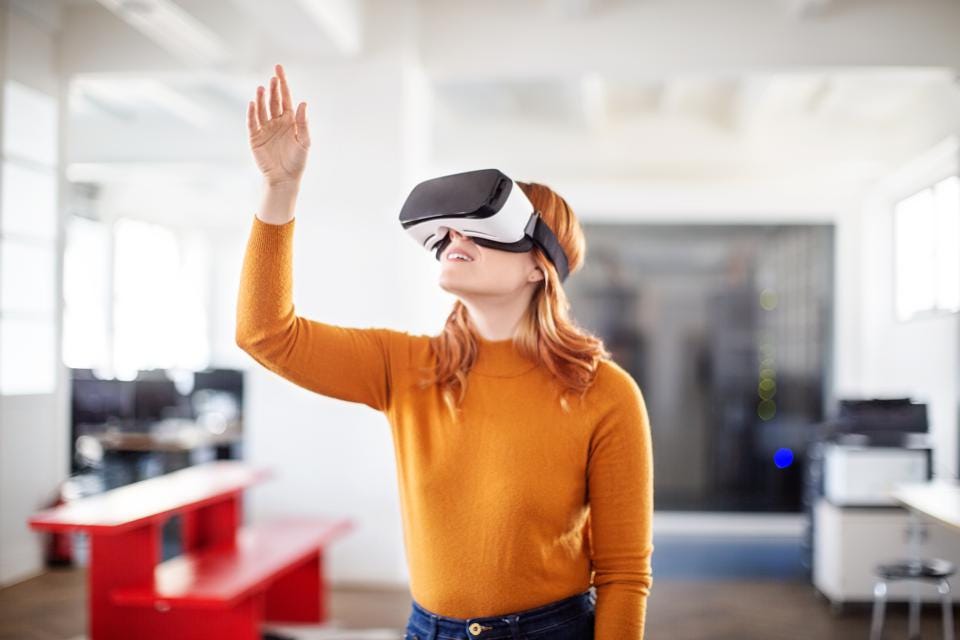
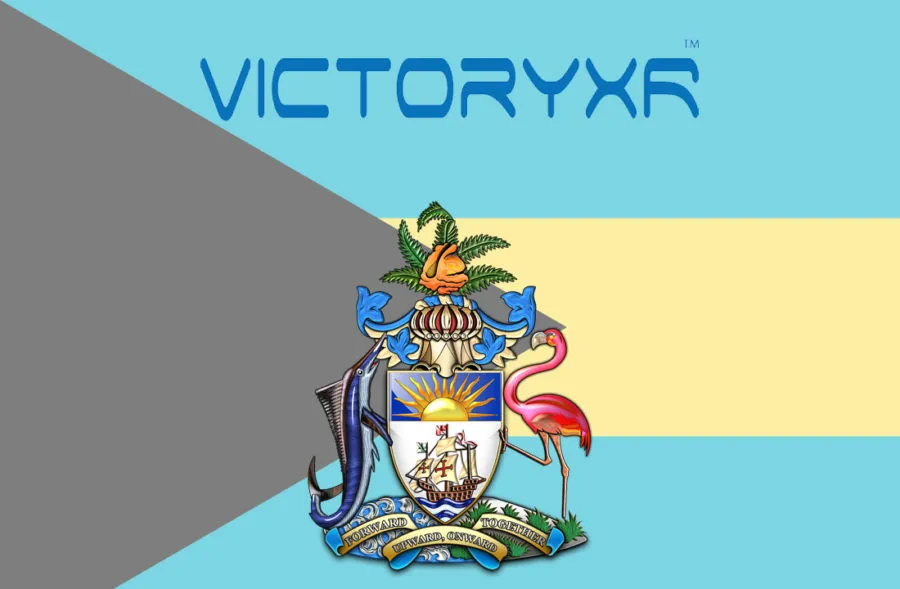

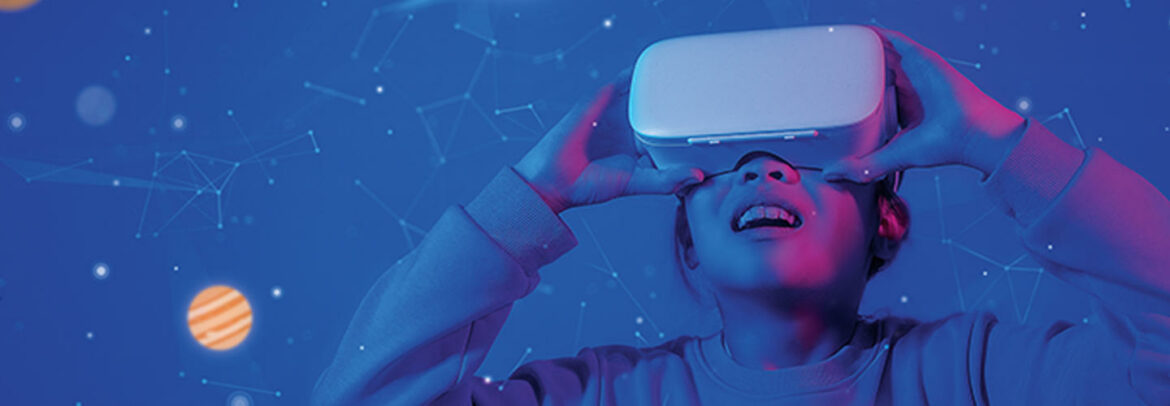

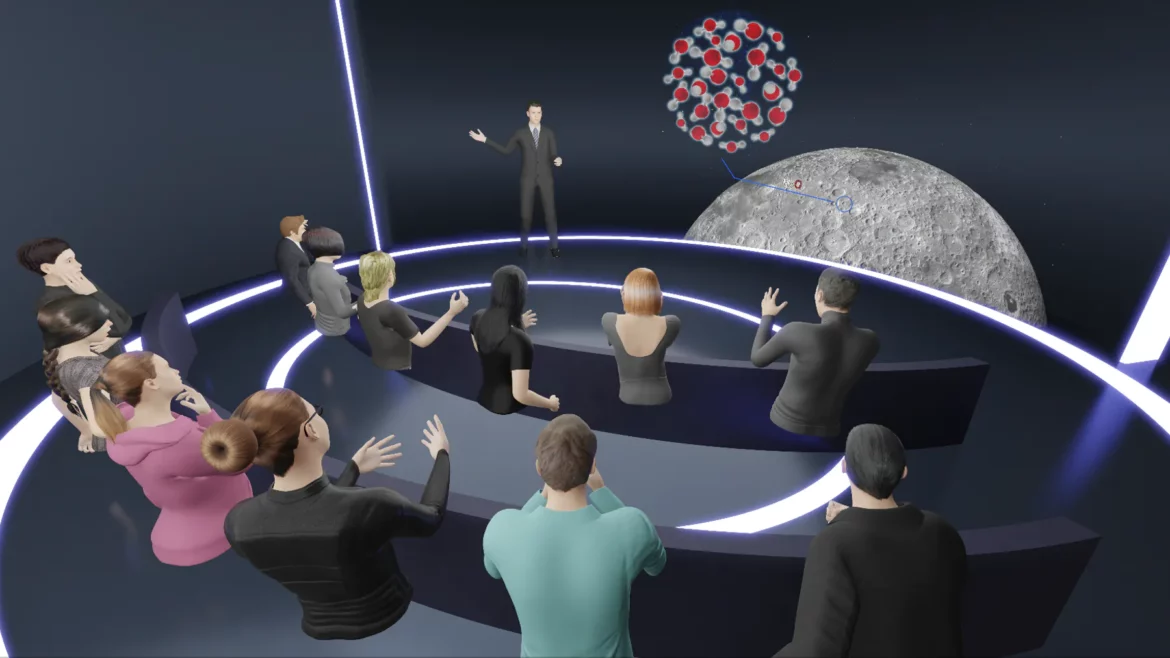
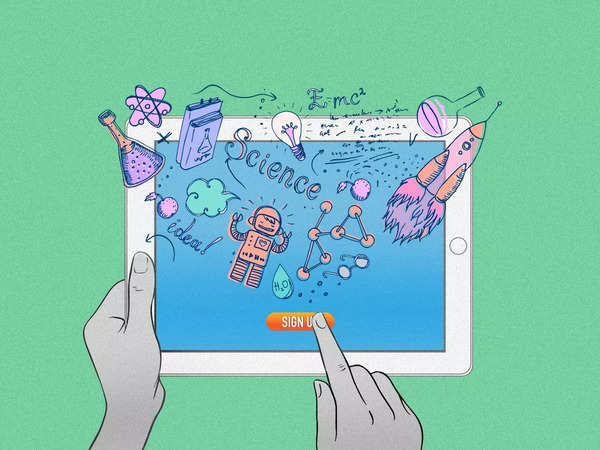
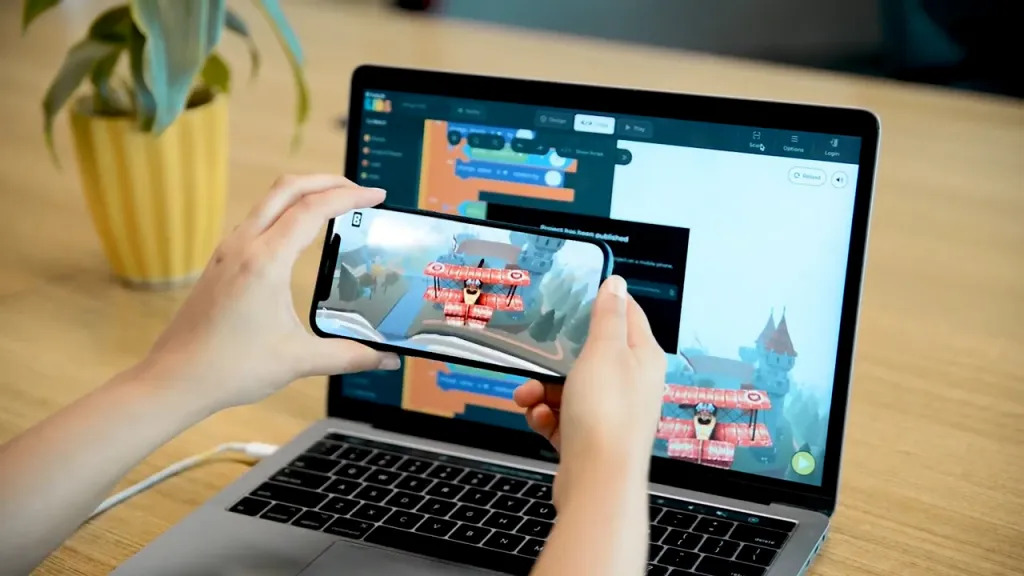



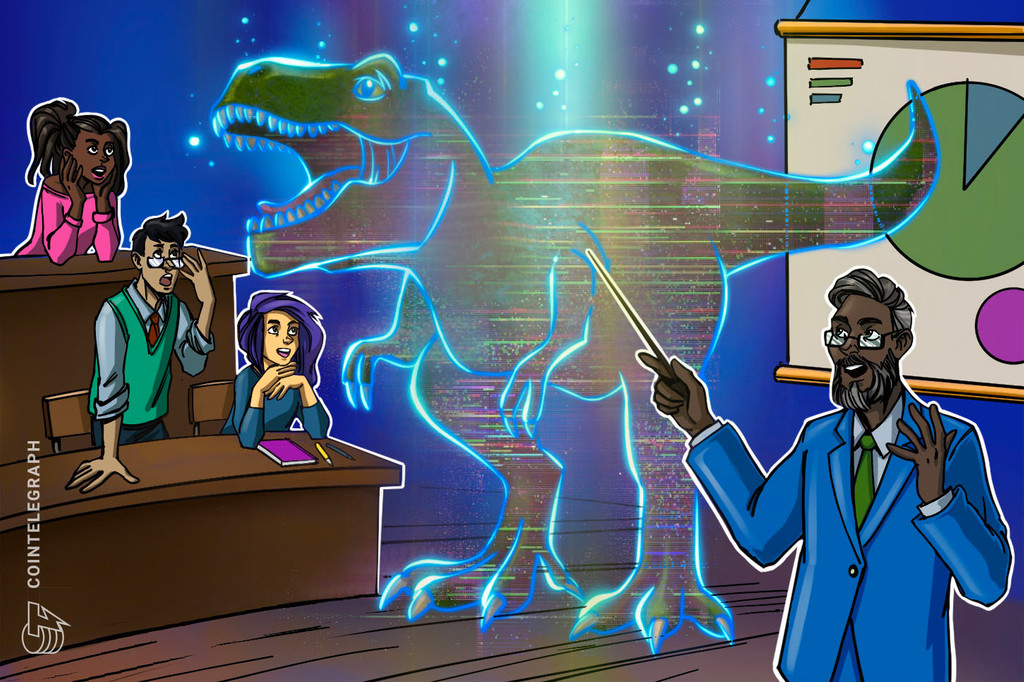
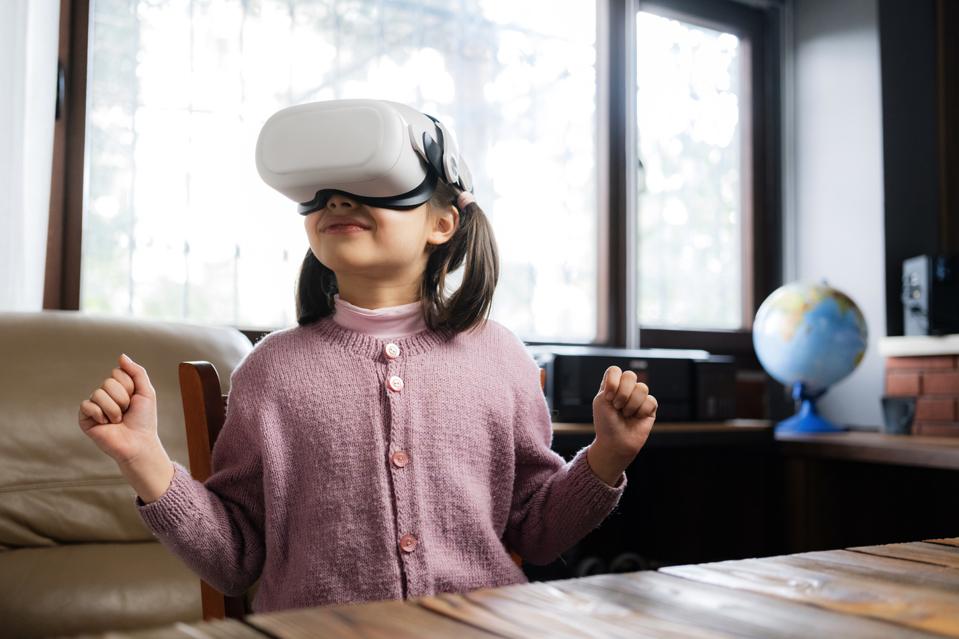

 Source: Becoming Brilliant, 2016. Revisiting the previous Greek mythology lesson, it was fun, active and minds on, engaging without being distracting, meaningful in its interconnections, and socially interactive. It also encouraged students to build the project together, to communicate with one another around the content of history, archeology, and STEM. It fostered critical thinking as the students bring the evidence from the dig to bear on their view of the artifacts they find. And in this exercise, they showed persistence in piecing together the pieces of the puzzle—the jug. The learning goal was well defined as one to demonstrate the history of the myths, careful critical reading, and STEM skills through spatial learning and puzzle construction. Finally, the example clearly “jumped” the screen of the fantastical world, when the class re-entered the real world and the teacher, now guide on the side, led the class through the lesson plan, connected today’s insights with what they discovered in their previous lessons, and supported children’s development of skills outside of the metaverse. Consider the alternative. A virtual space is created that looks well-designed and is gamified. The graphics are spectacular and there is related content available to explore, but these puzzle pieces do not fit together to result in a full understanding of the times (picture the ability to click on what are essentially Wikipedia articles as children navigate the space). Ads for other virtual spaces abound. Children are given a list of tasks to complete to earn “points” that are linked to a project grade. Teachers log in to ensure that all children meet the minimum requirements, but their role has been minimized as they “supervise” the digital activities of 200 children a year. These children are solo agents in an attractive space, but designers must note the difference in what Troseth and Strouse call the distinction between attention-directing versus attention distracting features of interactive digital media. Early studies on TV viewing and electronic books in young children show that strategically placed auditory or animated pictures can direct children’s attention to important content and aid comprehension, but that too many interactive features can distract. Educational spaces within the metaverse can align with the science of how children learn. Now is the time to design educational spaces with children at the center. Where the principles of learning meet the metaverse: The promise and the worry The promise The metaverse is but a context—an immersive one—that can in principle bring the best of digital technologies to bear on education if and only if it is done right, with the science of learning and real children in mind. Dissecting the possibilities, it is clear that games or activities in the metaverse hold the promise of being active rather than passive. Children can explore in this space “physically” and mentally. Whether the activity is engaging or not will be in the hands of the developer. As with apps, there are many products that capture the attention of children, but that interrupt the experience in ways that thwart engagement. Children do not learn when we interrupt a narrative or give too many choices. Thus, designers must be purposeful in creating a story board and having a flow through that board that does not divert a child’s attention to a new and irrelevant task or place. The question of meaningfulness should be readily solvable in the metaverse. Indeed, the realities that one can inhabit, if connected well to the child’s real or imagined world, can create a mental web that would support deep transferable learning. In one review, Hopkins and Weisberg ask whether children can transfer knowledge from fantasy in books to real world contexts. Data suggest that they can, though to a lesser degree than if they had learned in real-world contexts; this result also mirrors findings about younger children’s ability to transfer newly learned information from television. Another study, however, hints that children might even learn more from fantasy because fantasy might heighten learning in unusual contexts. In more recent research, Hopkins and Weisberg confirm this hypothesis when testing five-year-olds’ learning of scientific principles. The question that is more difficult to ponder is exactly what is meant by creating a social environment for children in the metaverse. The example presented above gives but one glimpse of what this could be if the games created are not for solo consumption but led by teachers for engaging students. Research in the science of how and what children learn squarely puts the foundation for all learning in social relationship building. An infant who is interacting with a parent has well-timed, contingent, semantically appropriate and emotionally aligned responses. The research suggests that stronger synchrony between caregiver and child supports brain growth and connectivity, as well as early learning. Even at two years of age, a virtual agent does not substitute for a real person even if the virtual agent responds in a contingent manner that mirrors the human. Work from our laboratory suggests that at four years of age, children learn more from reading with a parent than they do alone, and measures of physiological arousal and self-reported emotion from the parent suggest a special bonding that occurs between child and parent—human to human. A series of articles in a recent compendium of research on digital versus human learning confirm this assertion. Finally, even for older children, synchrony plays a role. A recent paper by Lamb and colleagues finds that when elementary school teachers and students are verbally and socially engaged, they not only understand more of the material, but brain activity is synchronized. This is likely just the first of many pieces of evidence coming from this emerging approach of using neuroscience research in real-world classrooms. What is so special about social relationships? Why would emotional expression, bonding, touch, smell, and body language matter? Perhaps because they are critical forms of communication that would be absent in a virtual world—or at least in the metaverse as it is now conceived. Note that social interaction could be preserved if the virtual environment served as a prompt for interactions between real people in either the real or virtual setting rather than as a substitute for interaction. By way of example, an intact class that together “visits” Greece with the guidance of a teacher preserves live social interaction even in a digital backdrop, whereas creating a set of avatars to go on a trip together—even if controlled by live students—would not achieve the same effect. More research in this area is critical. The augmented reality, VR, and 3D world also holds the promise of porting children to new environments that they could never have explored or visited. For critical thinking, students can solve real problems, enter a makers’ fair and show their wares not only in their school, but to a broader community. They can visit different time periods to bring evidence to bear on age-old questions about Greek culture or even enter scientific laboratories and connect these experiences to real-life learning. Students can become creators, even as young children, who paint and compose with the top teachers and artists to assist them. They can even piece together history from fragments and craft their own story behind the Greek myths. From their own classroom, guided by teachers, the metaverse offers a hybrid world of enormous potential if it is done right. And to do that right, teachers and caregivers will play a key role as the guides to faraway places and immersive learning. Only skilled teachers can select lesson plans based on what they have observed spark interest in their students. Teachers can help children navigate in spaces that might bring up difficult feelings (e.g., navigating in a supermarket metaverse that helps build number and money knowledge for a child whose family is food insecure). Teachers can select virtual spaces that they know will help each and every child in their class feel represented. Teachers can help children push beyond their comfort zones and tackle academic and social challenges based on individual’s strengths and difficulties. And teachers and caregivers can link what children are learning with what they already know. The metaverse is not a replacement for teachers, instead, it is a tool through which teachers can spark learning and social interaction in new ways. To date, there is little data to help the field forge a direction. Some early research suggested that digital games, including Pokemon GO, could increase physical activity for users by encouraging outdoor experiences. The game also seemed to encourage co-use, and many parents reported that it provided opportunities for family bonding. For example, one study by Jakki Bailey and Jeremy Bailenson of Stanford University and colleagues found that children who see Sesame Street’s Grover in VR are more compliant with his instructions and give him more stickers afterward compared with children who saw the same content on a television screen. However, these same children performed worse on a measure of inhibitory control based on Simon Says—perhaps because the environment seemed so real that it was harder for them to inhibit acting like Grover. Earlier research on VR with young children suggests that the powerfully rich nature of these experiences can shape memory recall, which serves as an important reminder that children’s memories are vulnerable to suggestion. Other work suggests that children reading books with augmented reality were more motivated to read than those reading traditional books, though outcomes from the two sources were no different. And one study with 6- to 8-year-olds suggests that children learned more about physics in an augmented reality environment than in a real one studying concepts like force and friction. Hassinger-Das and colleagues, as well as Hadani and colleagues, provide recent reviews of research on digital technology and child development. Caveat emptor The rush to market and the enticement of new tools, however, can also be a downfall. It is imperative to get the social interaction component right from the start. For children and possibly for adults, the interaction of avatars—even if they look real and are wearing the latest fashions—will never be a substitute for real human interaction. It will be important to find ways to meld the virtual and real worlds in ways that preserve real teacher-child, caregiver-child, and child-child social relationships. It is imperative to get the social interaction component right from the start.It will also be key to avoid distractions. Games in VR environments are chock full of interruptions and distractions. Game builders love to insert bells and whistles—more design is often misinterpreted as providing a better educational experience, but that is not necessarily so. Anna Fisher, of Carnegie Mellon University, found that decorations on school walls can be more distracting than informative. When activities and behavioral interruptions break the flow of book reading, it leads to lower levels of story comprehension. Studies from our labs and others on technoference (i.e., moments when adults using technology like texting or taking a cell phone call interrupt the contingent interactions between parent and child) tell the same story. In those cases, children have been found to learn fewer words, parents to use less rich vocabulary with their young children, and children exhibit more behavior problems. It will also be critical to ensure that the child has real agency in these worlds as they explore and discover what they need to do to fulfill the implied learning goal. Finally, it will be critical to be culturally diverse and culturally inclusive in any games that are made. Indeed, the metaverse could potentially introduce families to perspectives and cultures that are different than their own in ways that promote understanding. We need to also consider issues of access, accuracy, and power dynamics. Many diverse and marginalized communities, particularly in urban and rural areas, may not have access to consistent reliable broadband that allows them to effectively participate in this new metaverse. Because we’ve seen how misinformation and inaccurate content can be spread via digital technologies, we must assure that the systems and games are supported by educational and/or historical content that is accurate, relevant, and authentic. The demonstrated and documented shortcomings of today’s technologies when it comes to people of color and marginalized communities show that the metaverse may not be a technological utopia for everyone—from facial recognition software not recognizing and/or misidentifying darker skinned people, to the racial and gender biases in some algorithms, to the proliferation of online hate speech targeting people of color and women. As the metaverse is designed and implemented, there must be an intentional effort to involve people from marginalized communities in significant leadership and decisionmaking roles to ensure that all users feel safe and valued as they participate in these environments. Back to the future And so, we return to the classroom surrounded by white walls that can transport children as if they live in the Magic School Bus. In this world, though, Ms. Frizzle will not be 2D, nor will she be an avatar. She will be a real human teacher, a guide on the side, helping children see beyond their own world into the future and past and even more deeply into the present. In this world, children will have “first”-hand experiences in foreign lands, master a broader suite of skills like the 6Cs, and be better equipped to transfer what they learn into the real world of people and places. The metaverse is coming to education. The question is whether as designers, policymakers, educators, and parents, we can mold intentional and appropriate opportunities that are truly educational within this new and exciting context.
Source: Becoming Brilliant, 2016. Revisiting the previous Greek mythology lesson, it was fun, active and minds on, engaging without being distracting, meaningful in its interconnections, and socially interactive. It also encouraged students to build the project together, to communicate with one another around the content of history, archeology, and STEM. It fostered critical thinking as the students bring the evidence from the dig to bear on their view of the artifacts they find. And in this exercise, they showed persistence in piecing together the pieces of the puzzle—the jug. The learning goal was well defined as one to demonstrate the history of the myths, careful critical reading, and STEM skills through spatial learning and puzzle construction. Finally, the example clearly “jumped” the screen of the fantastical world, when the class re-entered the real world and the teacher, now guide on the side, led the class through the lesson plan, connected today’s insights with what they discovered in their previous lessons, and supported children’s development of skills outside of the metaverse. Consider the alternative. A virtual space is created that looks well-designed and is gamified. The graphics are spectacular and there is related content available to explore, but these puzzle pieces do not fit together to result in a full understanding of the times (picture the ability to click on what are essentially Wikipedia articles as children navigate the space). Ads for other virtual spaces abound. Children are given a list of tasks to complete to earn “points” that are linked to a project grade. Teachers log in to ensure that all children meet the minimum requirements, but their role has been minimized as they “supervise” the digital activities of 200 children a year. These children are solo agents in an attractive space, but designers must note the difference in what Troseth and Strouse call the distinction between attention-directing versus attention distracting features of interactive digital media. Early studies on TV viewing and electronic books in young children show that strategically placed auditory or animated pictures can direct children’s attention to important content and aid comprehension, but that too many interactive features can distract. Educational spaces within the metaverse can align with the science of how children learn. Now is the time to design educational spaces with children at the center. Where the principles of learning meet the metaverse: The promise and the worry The promise The metaverse is but a context—an immersive one—that can in principle bring the best of digital technologies to bear on education if and only if it is done right, with the science of learning and real children in mind. Dissecting the possibilities, it is clear that games or activities in the metaverse hold the promise of being active rather than passive. Children can explore in this space “physically” and mentally. Whether the activity is engaging or not will be in the hands of the developer. As with apps, there are many products that capture the attention of children, but that interrupt the experience in ways that thwart engagement. Children do not learn when we interrupt a narrative or give too many choices. Thus, designers must be purposeful in creating a story board and having a flow through that board that does not divert a child’s attention to a new and irrelevant task or place. The question of meaningfulness should be readily solvable in the metaverse. Indeed, the realities that one can inhabit, if connected well to the child’s real or imagined world, can create a mental web that would support deep transferable learning. In one review, Hopkins and Weisberg ask whether children can transfer knowledge from fantasy in books to real world contexts. Data suggest that they can, though to a lesser degree than if they had learned in real-world contexts; this result also mirrors findings about younger children’s ability to transfer newly learned information from television. Another study, however, hints that children might even learn more from fantasy because fantasy might heighten learning in unusual contexts. In more recent research, Hopkins and Weisberg confirm this hypothesis when testing five-year-olds’ learning of scientific principles. The question that is more difficult to ponder is exactly what is meant by creating a social environment for children in the metaverse. The example presented above gives but one glimpse of what this could be if the games created are not for solo consumption but led by teachers for engaging students. Research in the science of how and what children learn squarely puts the foundation for all learning in social relationship building. An infant who is interacting with a parent has well-timed, contingent, semantically appropriate and emotionally aligned responses. The research suggests that stronger synchrony between caregiver and child supports brain growth and connectivity, as well as early learning. Even at two years of age, a virtual agent does not substitute for a real person even if the virtual agent responds in a contingent manner that mirrors the human. Work from our laboratory suggests that at four years of age, children learn more from reading with a parent than they do alone, and measures of physiological arousal and self-reported emotion from the parent suggest a special bonding that occurs between child and parent—human to human. A series of articles in a recent compendium of research on digital versus human learning confirm this assertion. Finally, even for older children, synchrony plays a role. A recent paper by Lamb and colleagues finds that when elementary school teachers and students are verbally and socially engaged, they not only understand more of the material, but brain activity is synchronized. This is likely just the first of many pieces of evidence coming from this emerging approach of using neuroscience research in real-world classrooms. What is so special about social relationships? Why would emotional expression, bonding, touch, smell, and body language matter? Perhaps because they are critical forms of communication that would be absent in a virtual world—or at least in the metaverse as it is now conceived. Note that social interaction could be preserved if the virtual environment served as a prompt for interactions between real people in either the real or virtual setting rather than as a substitute for interaction. By way of example, an intact class that together “visits” Greece with the guidance of a teacher preserves live social interaction even in a digital backdrop, whereas creating a set of avatars to go on a trip together—even if controlled by live students—would not achieve the same effect. More research in this area is critical. The augmented reality, VR, and 3D world also holds the promise of porting children to new environments that they could never have explored or visited. For critical thinking, students can solve real problems, enter a makers’ fair and show their wares not only in their school, but to a broader community. They can visit different time periods to bring evidence to bear on age-old questions about Greek culture or even enter scientific laboratories and connect these experiences to real-life learning. Students can become creators, even as young children, who paint and compose with the top teachers and artists to assist them. They can even piece together history from fragments and craft their own story behind the Greek myths. From their own classroom, guided by teachers, the metaverse offers a hybrid world of enormous potential if it is done right. And to do that right, teachers and caregivers will play a key role as the guides to faraway places and immersive learning. Only skilled teachers can select lesson plans based on what they have observed spark interest in their students. Teachers can help children navigate in spaces that might bring up difficult feelings (e.g., navigating in a supermarket metaverse that helps build number and money knowledge for a child whose family is food insecure). Teachers can select virtual spaces that they know will help each and every child in their class feel represented. Teachers can help children push beyond their comfort zones and tackle academic and social challenges based on individual’s strengths and difficulties. And teachers and caregivers can link what children are learning with what they already know. The metaverse is not a replacement for teachers, instead, it is a tool through which teachers can spark learning and social interaction in new ways. To date, there is little data to help the field forge a direction. Some early research suggested that digital games, including Pokemon GO, could increase physical activity for users by encouraging outdoor experiences. The game also seemed to encourage co-use, and many parents reported that it provided opportunities for family bonding. For example, one study by Jakki Bailey and Jeremy Bailenson of Stanford University and colleagues found that children who see Sesame Street’s Grover in VR are more compliant with his instructions and give him more stickers afterward compared with children who saw the same content on a television screen. However, these same children performed worse on a measure of inhibitory control based on Simon Says—perhaps because the environment seemed so real that it was harder for them to inhibit acting like Grover. Earlier research on VR with young children suggests that the powerfully rich nature of these experiences can shape memory recall, which serves as an important reminder that children’s memories are vulnerable to suggestion. Other work suggests that children reading books with augmented reality were more motivated to read than those reading traditional books, though outcomes from the two sources were no different. And one study with 6- to 8-year-olds suggests that children learned more about physics in an augmented reality environment than in a real one studying concepts like force and friction. Hassinger-Das and colleagues, as well as Hadani and colleagues, provide recent reviews of research on digital technology and child development. Caveat emptor The rush to market and the enticement of new tools, however, can also be a downfall. It is imperative to get the social interaction component right from the start. For children and possibly for adults, the interaction of avatars—even if they look real and are wearing the latest fashions—will never be a substitute for real human interaction. It will be important to find ways to meld the virtual and real worlds in ways that preserve real teacher-child, caregiver-child, and child-child social relationships. It is imperative to get the social interaction component right from the start.It will also be key to avoid distractions. Games in VR environments are chock full of interruptions and distractions. Game builders love to insert bells and whistles—more design is often misinterpreted as providing a better educational experience, but that is not necessarily so. Anna Fisher, of Carnegie Mellon University, found that decorations on school walls can be more distracting than informative. When activities and behavioral interruptions break the flow of book reading, it leads to lower levels of story comprehension. Studies from our labs and others on technoference (i.e., moments when adults using technology like texting or taking a cell phone call interrupt the contingent interactions between parent and child) tell the same story. In those cases, children have been found to learn fewer words, parents to use less rich vocabulary with their young children, and children exhibit more behavior problems. It will also be critical to ensure that the child has real agency in these worlds as they explore and discover what they need to do to fulfill the implied learning goal. Finally, it will be critical to be culturally diverse and culturally inclusive in any games that are made. Indeed, the metaverse could potentially introduce families to perspectives and cultures that are different than their own in ways that promote understanding. We need to also consider issues of access, accuracy, and power dynamics. Many diverse and marginalized communities, particularly in urban and rural areas, may not have access to consistent reliable broadband that allows them to effectively participate in this new metaverse. Because we’ve seen how misinformation and inaccurate content can be spread via digital technologies, we must assure that the systems and games are supported by educational and/or historical content that is accurate, relevant, and authentic. The demonstrated and documented shortcomings of today’s technologies when it comes to people of color and marginalized communities show that the metaverse may not be a technological utopia for everyone—from facial recognition software not recognizing and/or misidentifying darker skinned people, to the racial and gender biases in some algorithms, to the proliferation of online hate speech targeting people of color and women. As the metaverse is designed and implemented, there must be an intentional effort to involve people from marginalized communities in significant leadership and decisionmaking roles to ensure that all users feel safe and valued as they participate in these environments. Back to the future And so, we return to the classroom surrounded by white walls that can transport children as if they live in the Magic School Bus. In this world, though, Ms. Frizzle will not be 2D, nor will she be an avatar. She will be a real human teacher, a guide on the side, helping children see beyond their own world into the future and past and even more deeply into the present. In this world, children will have “first”-hand experiences in foreign lands, master a broader suite of skills like the 6Cs, and be better equipped to transfer what they learn into the real world of people and places. The metaverse is coming to education. The question is whether as designers, policymakers, educators, and parents, we can mold intentional and appropriate opportunities that are truly educational within this new and exciting context. 